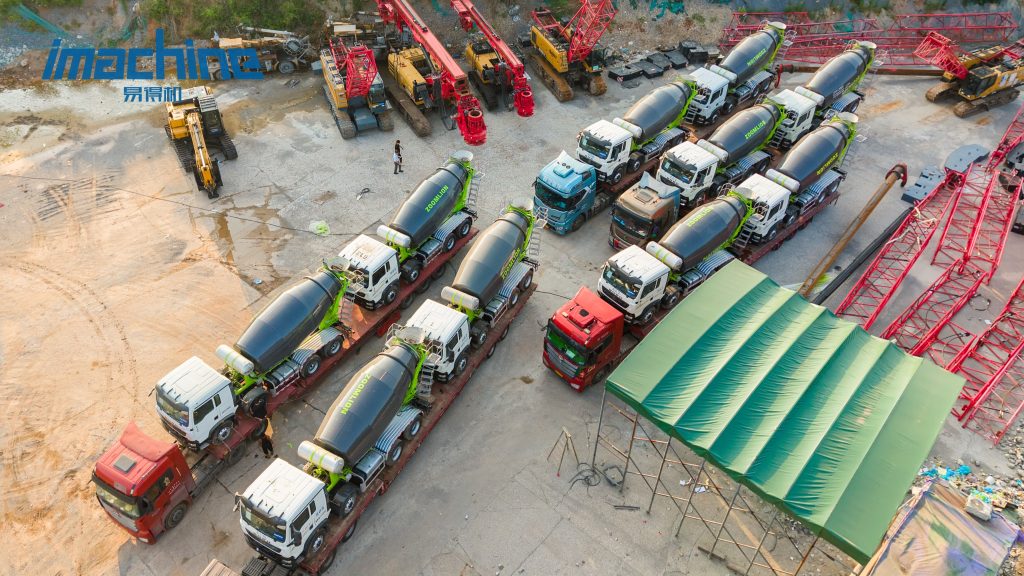
China Construction Equipment Export Surge in Early 2025
China Construction Equipment Export defied global economic headwinds in the first five months of 2025, achieving robust export growth and reaffirming its resilience. According to customs data, from January to May, exports of construction machinery totaled USD 23.095 billion, an 8.8% increase year-on-year. May alone recorded USD 5.024 billion, up 8.51%, continuing a streak of double-digit monthly growth.
As the domestic market enters a stabilization phase, the focus is now shifting to whether this export-driven momentum can be sustained. What fuels this growth, and how can it be defended against rising global uncertainties?
Industrial Backbone and Product Strength Fuel the Construction Equipment Export
In the arena of global competition, the battleground has moved beyond isolated product performance. Today, it’s a full-spectrum contest of supply chain integrity, technological independence, and industrial sophistication.
China has built a highly integrated manufacturing ecosystem, with mature logistics networks and large-scale production capabilities. From factory floor to international delivery, every step is optimized for speed and cost-effectiveness. This industrial depth forms the foundation of China’s growing export strength—one that rivals find increasingly difficult to replicate.

Simultaneously, Chinese construction machinery has closed the gap in key technology areas. Innovations in electrification, automation, and equipment scaling have significantly elevated product quality. Domestic brands are now offering machines that not only perform at par with global leaders but also come with a compelling cost-performance advantage. The increasing localization of critical technologies has further freed Chinese manufacturers from reliance on foreign suppliers, strengthening strategic autonomy.
This leap in competitiveness is visible in expanding global footprints. Traditional markets like Indonesia and Russia maintain strong demand driven by infrastructure projects and regional development. Meanwhile, emerging markets across Africa, including Mali and Guinea, are experiencing explosive growth as urbanization and mining investments surge. In Q1 2025, exports of excavators to some West African nations rose over 300% year-on-year.
Navigating Overseas Expansion Amid Mounting Challenges
Despite the remarkable progress, the road ahead is not without obstacles. Sluggish global recovery, rising trade protectionism, and demand softening in certain regions are testing the limits of current export strategies.
The mantra “Go global or go home” has led to intensified competition overseas. What was once a Chinese domestic price war has now spilled into international markets, reducing margins and compromising long-term brand value. Chinese companies now face a pincer movement—squeezed by entrenched giants like Caterpillar and Komatsu on one side, and cost-disruptive entrants from India and Turkey on the other.

In addition, tariff disputes, technical trade barriers, and complex regulatory frameworks in Western markets are adding new layers of difficulty. U.S. tariffs and EU compliance requirements, for example, are forcing companies to rethink their export destination strategies.
Yet, the long-term outlook remains optimistic. As policy support intensifies and internal adjustments take hold, Chinese enterprises are regrouping. The global market still holds ample room for growth—particularly in regions with infrastructure deficits and evolving industrial bases.
At a recent industry forum, Su Zimeng, Chairman of the China Construction Machinery Association, predicted that export volumes would maintain their high trajectory in 2025. He emphasized that technology, product quality, and service capability are increasingly recognized by international clients, giving Chinese firms a competitive edge that is both structural and sustainable.
Strengthening Global Presence Through Smart Strategy
To maintain export momentum and solidify international standing, companies must go beyond transactional success. A shift toward strategic internationalization is essential.
This involves:
- Expanding and optimizing overseas market networks
- Collaborating with upstream and downstream partners for coordinated international operations
- Prioritizing value-added exports over volume
- Reinforcing brand integrity and service reliability
- Establishing regional hubs for after-sales support and localized R&D
Equally important is curbing the race-to-the-bottom competition that undermines long-term industry health. Building a high-trust ecosystem, where firms compete on innovation and service rather than price alone, is critical for sustainable development.
Chinese OEMs are also being urged to invest in brand storytelling, corporate responsibility, and market education, showcasing not just machines, but a complete and trustworthy industrial experience.

Conclusion: From Product Export to Global Value Leadership
Having weathered multiple industry cycles, China’s construction machinery titans are evolving rapidly. No longer content with sporadic overseas sales, they are shifting to a model of industrial exportation and globalized operation.
This transformation is being powered by:
- Product modernization
- Structural refinement
- Cost-efficiency optimization
- Technology self-reliance
As these strategies take root, Chinese firms are expected to climb the global value chain and expand their influence on the international stage. While short-term turbulence persists, the long-term vision is clear—to become world-class leaders in construction equipment through innovation, resilience, and strategic foresight.